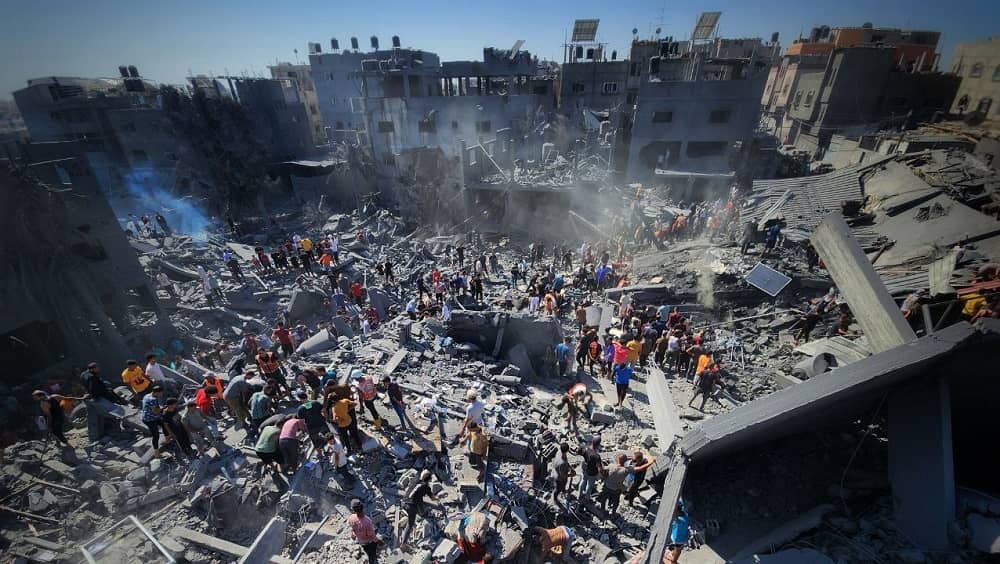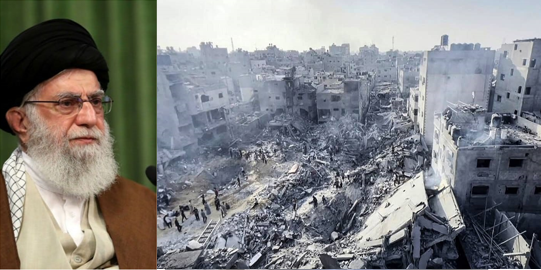
This idea is now being actively discussed in capitals across the world. Mahmoud Abbas, the Palestinian government’s leader, is championing this approach, grounded in existing international agreements. Amidst the shadows of war and heartbreaking atrocities, Abbas’s advocacy offers a ray of hope to the global conscience, deeply shaken by the ongoing turmoil.
However, the consensus on this solution, which includes Arab and Muslim nations, the United States, and European countries, faces a significant hurdle: the clerical dictatorship in Iran. From the proposal’s inception, Iran has not only dismissed it but has also actively sabotaged any prospects of Middle East stability by arming and financially supporting groups opposed to peace.
My heartfelt condolences to the people & government of Palestine, and President Mahmoud Abbas, on the horrifying slaughter of innocent people and patients in the Gaza #Hospital.
Khamenei and Raisi are happy, thinking that they have achieved their goal. pic.twitter.com/GUZzwo5L0v— Maryam Rajavi (@Maryam_Rajavi) October 17, 2023
The November 11 emergency summit of Arab and Islamic countries in Riyadh, Saudi Arabia, marked a pivotal moment. A strong consensus emerged in favor of the two-state solution. At this summit, Mahmoud Abbas passionately advocated for negotiations and underscored the criticality of a political roadmap towards peace.
In stark contrast, Ebrahim Raisi, representing Iran’s clerical regime, proposed a “one-state solution” after the Riyadh conference. According to Iranian state media, Raisi opposed the two-state solution, advocating for a “one-state solution” that would ostensibly be democratic and inclusive of all Palestinians, irrespective of their religious beliefs
Further complicating matters, on November 13, Nasser Kanani, spokesperson for Iran’s Foreign Ministry, openly rejected the two-state solution. Kanani’s statement, advocating for a unified Palestinian government “from the sea to the river,” underscores Iran’s rigid stance on this issue.

Iran’s regime, known for its repression of democratic norms and religious minorities, continues to harm the Palestinian Cause through divisive actions, undermining Palestinian unity. By employing anti-Israel rhetoric and deceptive maneuvers, the regime seeks to marginalize the Palestinian government and derail its efforts towards a political resolution.
Contrary to some policymakers’ beliefs, Iran’s aggressive stance is not merely about regional power struggles. The regime’s existential crisis is the underlying driver of its disruptive actions in the Middle East. The Iranian Resistance has long argued that the regime’s survival hinges on its belligerence, primarily through its extensive military apparatus, the Islamic Revolutionary Guard Corps, and its ambitious nuclear and missile programs. Should this warmongering cease, the regime would face intense scrutiny and have to confront its oppressed and suffering populace.
Thus, efforts to persuade or intimidate Iran’s clerical regime to forsake its survival strategies are as doomed as the numerous failed policies of the past four decades. The only viable path to lasting peace in the Middle East is the dismantling of a regime that sustains itself through continuous warfare and terror.

MEK Iran (follow us on Twitter and Facebook), Maryam Rajavi’s on her site, Twitter & Facebook, NCRI (Twitter & Facebook), and People’s Mojahedin Organization of Iran – MEK IRAN – YouTu







